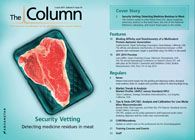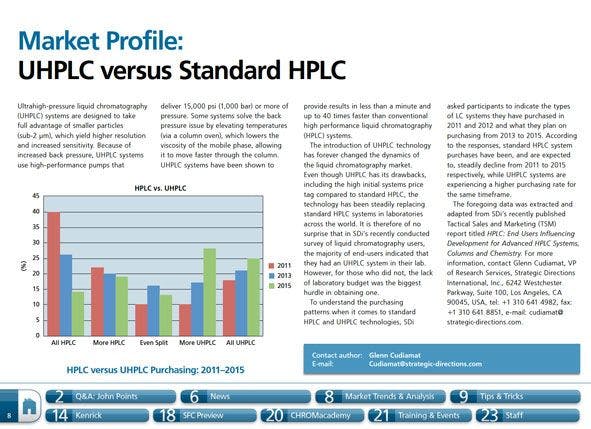The science of Aboriginal smoking ceremonies
Two researchers from the University of New England in Armidale, Australia, have investigated the traditional medicines used in Australian Aboriginal cultures using gas chromatography- mass spectrometry (GC-MS) and gas chromatography with flame ionization detection (GC-FID).1

Two researchers from the University of New England in Armidale, Australia, have investigated thetraditional medicines used in Australian Aboriginal cultures using gas chromatography–mass spectrometry (GC–MS) and gas chromatography with flame ionization detection (GC–FID).1
Eremophilia longifolia is one of the most significant of the traditional medicines used by Aboriginalpeople. Its traditional use involves smoldering the leaves over hot embers and then either breathingin the smoke or bodily exposure to the fumes to provide relief for respiratory complaints.
Nicholas Sadgrove, an ethnobotanist and lead author of the study, became interested instudying this area of research after growing up surrounded by Aboriginal culture. Historically,Aboriginal medicine has been believed to be entirely ritualistic, with minimal proveneffects. However, there are many who believe that it may not be the medicinethat is limited, but the science itself. Sadgrove told The Column: “Our research isstarting to demonstrate that standard methods are failing to fully capturemedicinal effects described previously by Aboriginal people. Typically, when weinvestigate these things we’re looking for an ‘active’ principle, perhaps a molecule,that can adequately perform all of the medicinal effects described anecdotally.”
The team collected Eremophilia longifolia specimens from a range of locations in westernNew South Wales, Australia. Essential oils (both non-pyrolysed and partially pyrolysed) were extracted from the samplesusing hydrodistillation and part-wet/part-dry distillation. For identification and quantification of the essential oils, GC–MSand GC–FID were used. Analysis with GC–MS enabled confirmation of the essential oils but the pyrolysed fraction wasn’tvolatile at the lower temperatures used in GC. GC–FID was more useful because it enabled the amount of pyrolysedmaterial in the sample to be quantified, relative to the essential oil. Both non-pyrolysed and partially pyrolysed oils werefound to have approximately three or more times greater antimicrobial activity when warmed incrementally.
The team concluded that their results provide the first known Western scientific justification for the Aboriginal smokingceremonies. Sadgrove added: “We have recently begun similar experiments with other species used for ‘smokingceremonies’ in Australian ethnobotany. We are starting to get results that demonstrate a potential ‘active’ principle, possibly amolecule. With fractionation and purification, our ‘active’ molecule will most likely appear in GC–MS due to its low molecularsize. In this particular case, GC–MS will go a long way toward helping us to identify this molecule.”
Reference
1. 1. N.J. Sadgrove and G.L Jones, J Ethnopharmacol.147(3), 638–44 (2013).
This story originally appeared in The Column. Click here to view that issue.

Regulatory Deadlines and Supply Chain Challenges Take Center Stage in Nitrosamine Discussion
April 10th 2025During an LCGC International peer exchange, Aloka Srinivasan, Mayank Bhanti, and Amber Burch discussed the regulatory deadlines and supply chain challenges that come with nitrosamine analysis.












